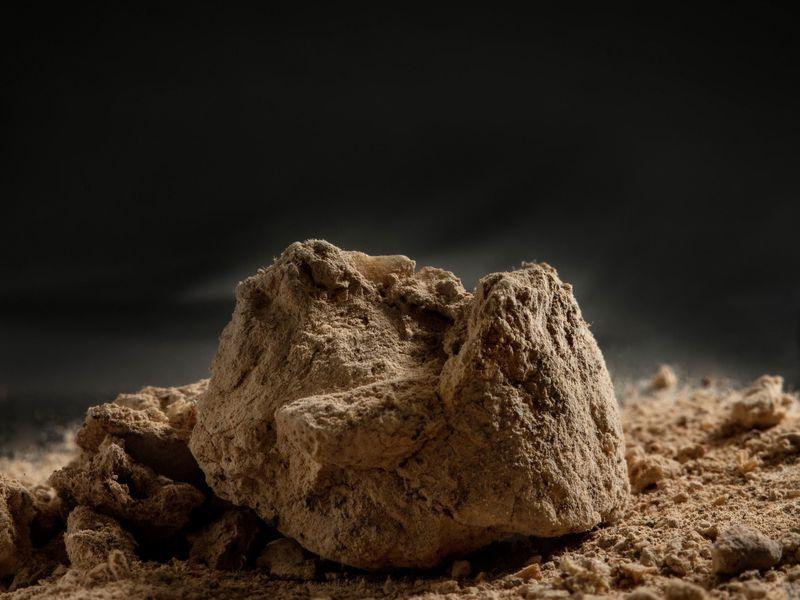14,000-Year-Old Fossilized Poop Among Oldest Traces of Humans in North America
By: Nora McGreevy (Smithsonian Magazine)


Here's an example of really crappy science. Or, rather, the science of crap.

For much of the 20th century, the most solid evidence pointing researchers toward who the earliest humans in the Americas were, when they settled and how they lived were 13,000-year-old sharpened stones, known as Clovis points.
However, that timeline has been revised in recent decades, as Erin Wayman reported for Smithsonian magazine in 2012. Archaeologists have unearthed evidence of pre-Clovis populations in the Americas at multiple sites, leading them to believe that humans have been here much earlier than previously thought. And in 2007, a team of working in Oregon's Paisley Caves discovered some of the most solid evidence yet: a cache of ancient human dung.
Researchers used radiocarbon dating to estimate that the dried-out scat, preserved in the arid climate of the caves, was more than 14,000 years old—old enough to upend the "Clovis First" timeline. Still, some researchers wondered: how could we be sure that the poop was really human? Many archaeologists claimed that the samples, known as coprolites, could have been animal feces that were later contaminated by human DNA, reports Asher Elbein for the New York Times.
"No one doubts that the coprolites are as old as the radiocarbon dates say they are, they just doubt they are human," environmental archaeologist John Blong of Newcastle University in the United Kingdom explains to Gizmodo's George Dvorsky. "If you've ever watched a crime show on TV, you know that DNA can get everywhere. Organisms constantly shed DNA in hair, skin cells, sweat, saliva, and so on."
Last week, lead author Lisa-Marie Shillito, Blong and a team from the University of Newcastle published their answer in the journal Science Advances: yes, the feces were almost certainly produced by humans.
The researchers came to their conclusion by studying the lipid biomarkers of 21 coprolite samples. These biomarkers are especially helpful because they are unlikely to contaminate nearby samples, per the New York Times. Taking the two pieces of evidence together—the presence of lipid biomarkers associated with humans and the presence of human DNA—the team was able to confirm 13 coprolites as human samples. (Other samples in the studied batch came from a panther and a lynx, according to Gizmodo.)
Katelyn McDonough, a Texas A&M University archeology Ph.D. candidate not involved in the research, tells Gizmodo that use of fecal biomarkers is an exciting approach. "This study both advances and showcases the fecal biomarker approach and makes a good case for the use of this method in tandem with DNA analysis in the future," says McDonough.
According to the Times, the makeup of the Paisley Cave dung can also provide clues to their diet. For instance, the coprolite samples showed that early humans ate seeds, plants and rodents in addition to the occasional mammoth.
"The question of when and how people first settled the Americas has been a subject of intense debate," Lisa-Marie Shillito says in a University of Newcastle statement. "By using a different approach, we have been able to demonstrate that there were pre-Clovis populations present in the area of the Great Basin and resolve this debate once and for all."
Still, there's much more to learn. Shillito tells the Times that further studies like this one will help illuminate the origins of Homo sapiens in the Americas. "We'll get a more detailed idea of exactly how people were moving around across the continent, and what they were doing in the environment, rather than just thinking about when they got there," says Shillito.
In a controversial study published just last week, University of Exeter archaeologist Ciprian Ardeleanpublished more evidence of pre-Clovis populations. Ardelean and his team used radiocarbon dating to show that stone artifacts found in Mexico's Chiquihuite cave were possibly more than 26,000 years old, as Brian Handwerk reports for Smithsonian magazine.







Is this ancient crap also the first evidence of politics in the Americas?
Hey now my people the Neanderthal’s might have been the first people in America 130,000 years ago.
I was surprised to find out that fossilized human excrement actually has a name , what it is I am too lazy to look up , but I think they are called cropolites, and I was even more stunned to find out that the Largest one belonged to what researchers claimed was a VERY sick Viking . im like who wants to look at that shit in a microscope?
But I do think this article is of interest to most here since most members have a degree in bovine scatology or they seem to at least. they all can sniff out and call bullshit...
And I have 2 very good scatology stories .
first one happened a couple years ago when I went to the local smoke shop ran by the tribes , it also has a casino so it attracts a lot of tourists going through , while I was out pumping gas a tourist and his wife approached me to ask directions and advice . they had never been in our western mnts , the wife was particularly concerned about bears .
I informed them we had both black and grizzand was asked whats the best way to find out if a bear is in the area without missing a beat , I simply said in the camp grounds look for bear scat(shit ) , that would be a good indicator.
The wife then asked well how can we tell if its from a black bear or a grizzly?
again without missing a beat i told her that was easy , if it has little tinkly bells in it and smells like hot pepper sauce , thats a grizz the look on her face was of utter shock and priceless.
second story , friend of mine was up cutting firewood , he found which was not uncommon in the area moose pellets ( droppings) he put a bunch of them in a grocery bag and took them home , and proceeded to give them a glazed coating , dont know of what , but he bottled them in a large drug container he carried in his pocket , in another pocket he carried an identical pill bottle with malted milk balls .
he would them go to the bar and about every 15 mins pop amalted milk bar in his mouth and was it down , invariably some tourist would het curious and ask about what he was taking , he would say he called them his "smart pills " to help his memory.
the conversation would go on alittle and the tourist would ask if they could try one . well he would pull out the bottle with the glazed moose pellets and offer to them , and they would open it and examine then eventually pop one in their mouth.
after biting down on one , ( they were too big to swallow whole and the fake pharmacy labels had chewable on it ), they would look at the guy and say , these taste like shit! at which point he would look at them and grin and say " See ? Smarter already."
he got into a lot of fights , but he also got a lot of free drinks from the locals for the laughs .